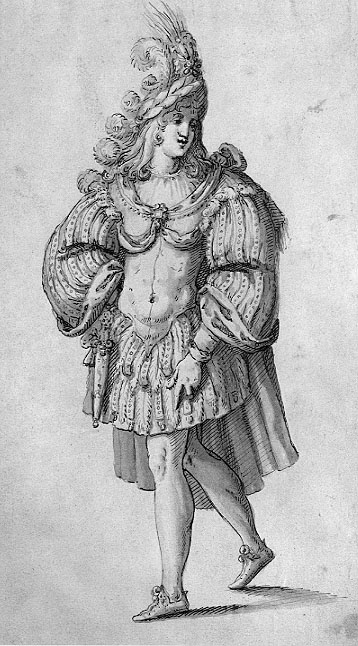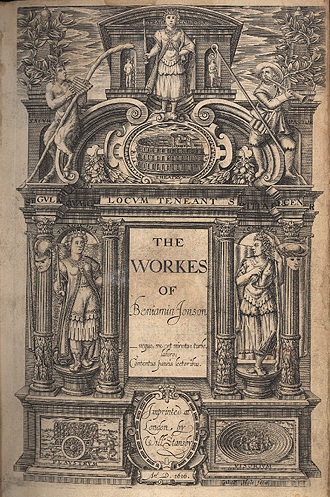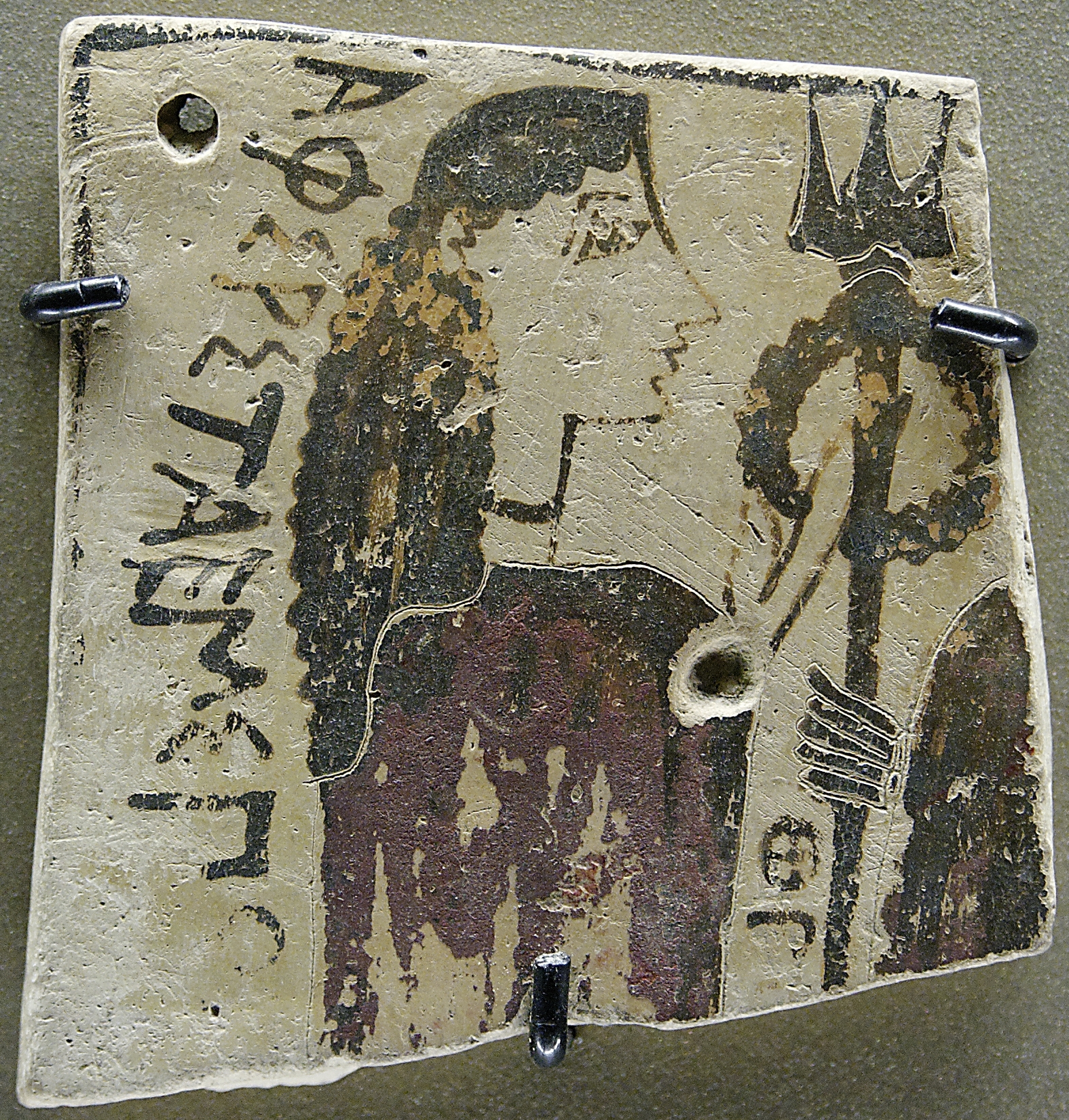|
Love's Triumph Through Callipolis
''Love's Triumph Through Callipolis'' was the first masque performed at the Stuart Court during the reign of King Charles I, and the first in which a reigning monarch appeared. The work was written by Ben Jonson, with costumes, sets, and stage effects designed by Inigo Jones, and music by Nicholas Lanier. This play was revived by the National Theatre of Greece in 1979 together with Johnson's masques '' Oberon, the Faery Prince'' and '' News from the New World Discovered in the Moon''. Masquing resumed At the start of his reign in 1625, King Charles discontinued the practice of staging annual masques during the Christmas season, which had prevailed throughout the reign of his father James I, from '' The Masque of Blackness'' in 1605 to '' The Fortunate Isles and Their Union'' in 1625. His new bride, Henrietta Maria of France, was too young and inexperienced to take over the role of the previous queen, Anne of Denmark, who had been the prime mover in the production of the m ... [...More Info...] [...Related Items...] OR: [Wikipedia] [Google] [Baidu] |
Masque
The masque was a form of festive courtly entertainment that flourished in 16th- and early 17th-century Europe, though it was developed earlier in Italy, in forms including the intermedio (a public version of the masque was the pageant). A masque involved music, dancing, singing and acting, within an elaborate stage design, in which the architectural framing and costumes might be designed by a renowned architect, to present a deferential allegory flattering to the patron. Professional actors and musicians were hired for the speaking and singing parts. Masquers who did not speak or sing were often courtiers: the English queen Anne of Denmark frequently danced with her ladies in masques between 1603 and 1611, and Henry VIII and Charles I of England performed in the masques at their courts. In the tradition of masque, Louis XIV of France danced in ballets at Versailles with music by Jean-Baptiste Lully. Development The masque tradition developed from the elaborate pageants and co ... [...More Info...] [...Related Items...] OR: [Wikipedia] [Google] [Baidu] |
Chloridia
''Chloridia: Rites to Chloris and Her Nymphs'' was the final masque that Ben Jonson wrote for the Stuart Court. It was performed at Shrovetide, 22 February 1631, with costumes, sets and stage effects designed by Inigo Jones. The masque ''Chloridia'' was the second of a duet of 1631 royal masques, the first being '' Love's Triumph Through Callipolis,'' which had been staged six weeks earlier, on 9 January. In the first work, King Charles I danced; in the second, Queen Henrietta Maria starred with her ladies in waiting. Both masques dealt with the theme of Platonic love, a concept dear to the Queen's heart. ''Chloridia'' depends on rich imagery of nature, greenery, and the seasons, with figures like Zephyrus, Juno, and Iris, along with naiads and personifications of "Poesy, History, Architecture, and Sculpture." The anti-masque features dwarfs and macabre figures emerged from Hell; one of the dancers was the dwarf Jeffrey Hudson, the Queen's page and jester. The masque was as ri ... [...More Info...] [...Related Items...] OR: [Wikipedia] [Google] [Baidu] |
Ben Jonson Folios
Ben Jonson (c. 11 June 1572 – c. 16 August 1637) collected his plays and other writings into a book he titled ''The Workes of Benjamin Jonson''. In 1616 it was printed in London in the form of a folio. Second and third editions of his works were published posthumously in 1640 and 1692. These editions of Ben Jonson's works were a crucial development in the publication of English Renaissance drama. The first folio collection, ''The Workes of Benjamin Jonson'', treated stage plays as serious works of literature and stood as a precedent for other play collections that followed—notably the First Folio of Shakespeare's plays in 1623, the first Beaumont and Fletcher folio in 1647, and other collections that were important in preserving the dramatic literature of the age. The first folio, 1616 ''The Workes of Benjamin Jonson'', the first Jonson folio of 1616, printed and published by William Stansby and sold through bookseller Richard Meighen, contained nine plays all previously pub ... [...More Info...] [...Related Items...] OR: [Wikipedia] [Google] [Baidu] |
Old Style And New Style Dates
Old Style (O.S.) and New Style (N.S.) indicate dating systems before and after a calendar change, respectively. Usually, they refer to the change from the Julian calendar to the Gregorian calendar as enacted in various Europe, European countries between 1582 and 1923. In England, Wales, Ireland and British America, Britain's American colonies, there were two calendar changes, both in 1752. The first adjusted the start of a new year from 25 March (Lady Day, the Feast of the Annunciation) to 1 January, a change which Scotland had made in 1600. The second discarded the Julian calendar in favour of the Gregorian calendar, skipping 11 days in the month of September to do so.. "Before 1752, parish registers, in addition to a new year heading after 24th March showing, for example '1733', had another heading at the end of the following December indicating '1733/4'. This showed where the Historical Year 1734 started even though the Civil Year 1733 continued until 24th March. ... We as h ... [...More Info...] [...Related Items...] OR: [Wikipedia] [Google] [Baidu] |
Thomas Walkley
Thomas Walkley (fl. 1618 – 1658) was a London publisher and bookseller in the early and middle seventeenth century. He is noted for publishing a range of significant texts in English Renaissance drama, "and much other interesting literature." Career Walkley became a "freedman" (a full member) of the Stationers Company on 19 January 1618 (all dates new style). His shop was located first at the sign of the Eagle and Child in Britain's Burse, until about 1630; later at the sign of the Flying Horse near York House; and finally at the sign of the Golden Mortar and Pestle between York House and Charring Cross. Walkley struggled financially in his early years, and had trouble paying his printers; but his fortunes improved by the later 1620s, as he benefitted from important political contacts. Yet political fortunes shifted in the turbulent century: in 1649 Walkley got into trouble with the Commonwealth government, which issued a warrant against him for dispensing royalist materi ... [...More Info...] [...Related Items...] OR: [Wikipedia] [Google] [Baidu] |
Book Size
The size of a book is generally measured by the height against the width of a leaf, or sometimes the height and width of its cover. A series of terms is commonly used by libraries and publishers for the general sizes of modern books, ranging from ''folio'' (the largest), to ''quarto'' (smaller) and ''octavo'' (still smaller). Historically, these terms referred to the format of the book, a technical term used by printers and Bibliography, bibliographers to indicate the size of a leaf in terms of the size of the original sheet. For example, a quarto (from Latin ''quartō'', ablative form of ''quartus'', fourth) historically was a book printed on sheets of paper folded in half twice, with the first fold at right angles to the second, to produce 4 leaves (or 8 pages), each leaf one fourth the size of the original sheet printed – note that a ''leaf'' refers to the single piece of paper, whereas a ''page'' is one side of a leaf. Because the actual format of many modern books cannot be d ... [...More Info...] [...Related Items...] OR: [Wikipedia] [Google] [Baidu] |
Juno (mythology)
Juno ( ; Latin ) was an Religion in ancient Rome, ancient Roman goddess, the protector and special counsellor of the state. She was syncretism, equated to Hera, queen of the gods in Greek mythology and a goddess of love and marriage. A daughter of Saturn (mythology), Saturn and Ops, she was the sister and wife of Jupiter (mythology), Jupiter and the mother of Mars (mythology), Mars, Vulcan (mythology), Vulcan, Bellona (goddess), Bellona, Lucina (mythology), Lucina and Juventas. Like Hera, her sacred animal was the peacock.''Larousse Desk Reference Encyclopedia'', The Book People, Haydock, 1995, p. 215. Her Etruscan Civilization, Etruscan counterpart was Uni (mythology), Uni, and she was said to also watch over the women of Rome. As the patron goddess of Rome and the Roman Empire, Juno was called ("Queen") and was a member of the Capitoline Triad (''Juno Capitolina''), centered on the Capitoline Hill in Rome, and also including Jupiter, and Minerva, goddess of wisdom. Juno's ow ... [...More Info...] [...Related Items...] OR: [Wikipedia] [Google] [Baidu] |
Jupiter (mythology)
Jupiter ( or , from Proto-Italic language, Proto-Italic "day, sky" + "father", thus "sky father" Greek: Zeus, Δίας or Zeus, Ζεύς), also known as Jove (nominative case, nom. and genitive case, gen. ), is the sky god, god of the sky and god of thunder, thunder, and king of the gods in ancient Roman religion and Roman mythology, mythology. Jupiter was the chief deity of Roman state religion throughout the Roman Republic, Republican and Roman Empire, Imperial eras, until Constantine the Great and Christianity, Christianity became the dominant religion of the Empire. In Roman mythology, he negotiates with Numa Pompilius, the second king of Rome, to establish principles of Roman religion such as offering, or sacrifice. Jupiter is thought to have originated as a sky god. His identifying implement is the thunderbolt and his primary sacred animal is the eagle, which held precedence over other birds in the taking of auspices and became one of the most common symbols of the Roma ... [...More Info...] [...Related Items...] OR: [Wikipedia] [Google] [Baidu] |
Cupid
In classical mythology, Cupid ( , meaning "passionate desire") is the god of desire, erotic love, attraction and affection. He is often portrayed as the son of the love goddess Venus and the god of war Mars. He is also known as Amor (Latin: ', "love"). His Greek counterpart is Eros.''Larousse Desk Reference Encyclopedia'', The Book People, Haydock, 1995, p. 215. Although Eros is generally portrayed as a slender winged youth in Classical Greek art, during the Hellenistic period, he was increasingly portrayed as a chubby boy. During this time, his iconography acquired the bow and arrow that represent his source of power: a person, or even a deity, who is shot by Cupid's arrow is filled with uncontrollable desire. In myths, Cupid is a minor character who serves mostly to set the plot in motion. He is a main character only in the tale of Cupid and Psyche, when wounded by his own weapons, he experiences the ordeal of love. Although other extended stories are not told about hi ... [...More Info...] [...Related Items...] OR: [Wikipedia] [Google] [Baidu] |
Amphitrite
In ancient Greek mythology, Amphitrite (; ) was the goddess of the sea, the queen of the sea, and her consort is Poseidon. She was a daughter of Nereus and Doris (or Oceanus and Tethys).Roman, L., & Roman, M. (2010). Under the influence of the Olympian pantheon, she became the consort of Poseidon and was later used as a symbolic representation of the sea. Her Roman counterpart is Salacia, a comparatively minor figure, and the goddess of saltwater. Family According to Hesiod's '' Theogony'', Amphitrite was one of the 50 Nereid daughters of Nereus and Doris. The mythographer Apollodorus, however, lists her among both the Nereids, as well as the Oceanids, the daughters of Oceanus and Tethys. Amphitrite's offspring included seals and dolphins. She also bred sea monsters and her great waves crashed against the rocks, putting sailors at risk. Poseidon and Amphitrite had a son, Triton, who was a merman, and a daughter, Rhodos (if this Rhodos was not actually father ... [...More Info...] [...Related Items...] OR: [Wikipedia] [Google] [Baidu] |
Oceanus
In Greek mythology, Oceanus ( ; , also , , or ) was a Titans, Titan son of Uranus (mythology), Uranus and Gaia, the husband of his sister the Titan Tethys (mythology), Tethys, and the father of the River gods (Greek mythology), river gods and the Oceanids, as well as being the great river which encircled the entire world. Etymology According to M. L. West, the etymology of Oceanus is "obscure" and "cannot be explained from Greek". The use by Pherecydes of Syros of the form () for the name lends support for the name being a loanword. However, according to West, no "very convincing" foreign models have been found. A Semitic derivation has been suggested by several scholars, while R. S. P. Beekes has suggested a loanword from the Aegean Pre-Greek non-Indo-European Stratum (linguistics), substrate. Nevertheless, Michael Janda sees possible Indo-European connections. Genealogy Oceanus was the eldest of the Titan offspring of Uranus (Sky) and Gaia (Earth). Hesiod lists his T ... [...More Info...] [...Related Items...] OR: [Wikipedia] [Google] [Baidu] |
Platonic Love
Platonic love is a type of love in which sexual desire or romantic features are nonexistent or have been suppressed or sublimated, but it means more than simple friendship. The term is derived from the name of Greek philosopher Plato, though the philosopher never used the term himself. Platonic love, as devised by Plato, concerns rising through levels of closeness to wisdom and true beauty, from carnal attraction to individual bodies to attraction to souls, and eventually, union with the truth. Platonic love is contrasted with romantic love. Classical philosophical interpretation Platonic love is examined in Plato's dialogue, the '' Symposium'', which has as its topic the subject of love, or more generally the subject of Eros. It explains the possibilities of how the feeling of love began and how it has evolved, both sexually and non-sexually, and defines genuine platonic love as inspiring a person's mind and soul and directing their attention towards spiritual matter ... [...More Info...] [...Related Items...] OR: [Wikipedia] [Google] [Baidu] |





